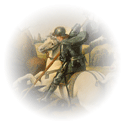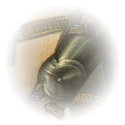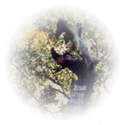O to be a dragon,
a symbol of the power of Heaven - of silkworm
size of immense, at times invisible.
Felicitous phenomenon
Marianne Moore (1959)
 Our knowledge about a dragon or a serpent came from the medieval bestiary book,
the popular collections of animal legends, stories, and monstrous animal descriptions,
often lavishly illustrated.
The core text of medieval bestiary is derived from the Greek work "Physiologus" (Naturalist)
compiled by an unknown author in Alexandria before the middle of the 2nd century AD.
The popularity of "Physiologus"
which circulated throughout early Middle Ages Europe can be only compared with
the popularity of the Bible.
Our knowledge about a dragon or a serpent came from the medieval bestiary book,
the popular collections of animal legends, stories, and monstrous animal descriptions,
often lavishly illustrated.
The core text of medieval bestiary is derived from the Greek work "Physiologus" (Naturalist)
compiled by an unknown author in Alexandria before the middle of the 2nd century AD.
The popularity of "Physiologus"
which circulated throughout early Middle Ages Europe can be only compared with
the popularity of the Bible.
These European bestiaries are a mixture of traditional stories and beliefs about destructive power of the animals, some of them grounded in natural history and others purely fantastic! The stories are often supplied with allegorical interpretations that fall into two broad categories: interpretations in bonum, where the animals provide examples of faith and salvation, and also interpretations in malum, where the animals are examples of chaos, temptation and sin.
Dragon (synonym of serpent) is classical example of a mythical monster usually depicted as a monstrous winged and scaly serpent or saurian with a crested head and enormous claws able to breathe out fire. In the Orient, it symbolizes supernatural power, wisdom, strength, and hidden knowledge. The Latin word "draco" means both snake and dragon, and hence the two are often used interchangeably. In Christian tradition dragon is associated with destructive power that brings a chaos, temptation and sin. Therefore it became a symbol of evil and a biblical synonym for Satan.
 As symbol of evil dragon can be only defeated or destroyed
through discipline marshaling of mental and physical powers therefore mythological
theme
"St George and a Dragon" was a very popular in Christian
paintings, especially Gothic and Renaissance period.
According to the ancient myth derived from "The Library" a book on Greek mythology by the 2nd
century Greek scholar Apollodorus, and "Legenda Aurea" both known by Raffaello, St. George
was traveling through a city Selena terrorized by a dragon. In order to placate the dragon, the city furnished
him with a few sheep every day to satisfy its hunger. But when the supply of sheep was exhausted, the sons and daughters of the citizens became the
dragon's victims. St. George arrived to the town at the moment when the dragon was about to swallow the king's daughter,
princess Sabra. With the help of God St. George overcame the dragon and beheaded him.
As symbol of evil dragon can be only defeated or destroyed
through discipline marshaling of mental and physical powers therefore mythological
theme
"St George and a Dragon" was a very popular in Christian
paintings, especially Gothic and Renaissance period.
According to the ancient myth derived from "The Library" a book on Greek mythology by the 2nd
century Greek scholar Apollodorus, and "Legenda Aurea" both known by Raffaello, St. George
was traveling through a city Selena terrorized by a dragon. In order to placate the dragon, the city furnished
him with a few sheep every day to satisfy its hunger. But when the supply of sheep was exhausted, the sons and daughters of the citizens became the
dragon's victims. St. George arrived to the town at the moment when the dragon was about to swallow the king's daughter,
princess Sabra. With the help of God St. George overcame the dragon and beheaded him.
The picture of St. George was commissioned by Duke Guidubaldo de Montefeltro of Urbino.
It was taken as a gift to Henry VII of England by Raphael's friend Count Baldassare Castiglione,
after the duke was inducted into the English knightly order.
George was patron saint of England and of the English Order of the Garter.
 Across center on breast strap of horse there is a painter signature "RAPHELLO / .V." (Raphael of Urbino).
The ribbon tied around saint's calf reads " HONI" opening of the order's slogan
"Honi soit qui mal y pense" (disgraced be he who thinks evil of it).
Across center on breast strap of horse there is a painter signature "RAPHELLO / .V." (Raphael of Urbino).
The ribbon tied around saint's calf reads " HONI" opening of the order's slogan
"Honi soit qui mal y pense" (disgraced be he who thinks evil of it).
Raphael Santi, connoisseur of ancient art, mastered grace and harmonious balance of the mythological theme with Renaissance symbolism of colors. Symbolism occurs in all Renaissance forms of art. Colors played a major and very important role in the Renaissance paintings. Meaning of colors provided additional hidden explanation of the scene.
This dynamic scene is set up in the moment when St. George dressed in the gray armour, sitting on rearing white horse is fighting the green dragon. In the background king's daughter is sitting in red and white with folded hands, presumably in prayer. Highly detailed and precise depicted landscape is clearly inspired by the Netherlandish paintings, probably by Hans Mamling's "Saint Veronica".
Since George occupies a central position; it can be assumed with all the other symbols interacting
with and through him.
Green is a dualistic color. It can represent envy, evil, and trickery, and/or growth, renewal,
love and life. In this respect green can be seen as a symbol of evil which is defeated by an knight
in a gray armor. Christianity commonly views grey as symbolic of death of the body while the
soul remains eternal.
In Christian art armor is a symbol of protection from evil. Can also be a symbol of the
glorious aspects of war: chivalry, knighthood and protection, as well as the sinister aspects:
fanaticism and brute force.
White may can represent either innocence/purity or the ultimate goal of purification.
It also symbolized light, air, life, holiness, celestial love, redemption.
White is often the heavenly, while black is the underworld.
Red is an emotionally charged color. It is associated with the sun and all
gods of war, anger, blood-lust, vengeance,
fire, and the masculine. It can also mean earth love, passion, health, and/or sexual arousal.
Killing the dragon is the conflict between light and darkness, slaying the forces of evil. Raphael returned to this subject three more times, "St. George fighting Dragon", "St. Michael fighting Demon", and "St. Michael fighting Dragon". All these paintings can be seen in Louvre, Paris, France.
Dragon as a symbol of evil plays a main character in many folk fairy-tales of many countries. These folk fairy-tales are differ with the Greek myth only in details however, the main motive "to kill the evil" remains the same. Let's check how far away a polish fairy-tale jumped from the myth.
 The most popular fairy-tale known by every Polish kid is "Smok Wawelski"(
Dragon of the Wawel Hill). The action of the tale takes place in
Krakow during the reign of King Krak, the city's legendary founder.
The fire-blowing dragon who lived in the cave at the foot of the Krakow castle along the banks of the Vistula River
terrorized citizens bringing
destruction and fear across the countryside, killing everybody who passed near the cave,
pillaging citizens homes and devouring their livestock.
To protect citizens belongings every day they leave 2 ships in front of his cave to satisfy his hunger.
Normally dragon was satisfy eating a sheep, but once a month he ordered to have a young girl for dinner.
Terrorized citizens had no choice, they had to scarify theirs daughters, to grant dragon's wish.
The King desperately worried by the tragic situation in the city and sent his bravest knights to defeat the beast
but they failed. Then he sent his heralds far and wide to announce to
the Royal houses and courts of Europe that whosoever could slay the dragon would - as a reward - marry his daughter
and sit on his throne after his death. Encouraged by such a handsome offer
many great princes and brave knights from all around Europe came to Krakow to measure their power with dragon, but they also failed.
Time passed and still the dragon tyrannized the countryside and the people.
One day, a poor apprentice of shoemaker named Szewczyk Dratewka stand in front of the sad King asking
if he could try to kill the beast. Seeing him in his holey shoes and his tattered leggings
the courtiers laughed calling him "next dragon's meal" but unawares to
courtiers King accepted his offer.
Dratewka could not wear an armor neither could fight with sword, but he made an intelligently tricky plan.
He stuffed a big lamb with sulphur and pitch, and put this hot meal outside
the dragon's cave. The dragon thinking this to be a nice tidbit before going hunting
devoured it up in the twinkling of an eye.
Very soon dragon became incredibly thirsty.
He quickly ran to the Vistula river near his cave and drank... and drank... and drank... No amount of drinking could quell the
fire in his
stomach, and after drinking a half of the Vistula river he exploded. Dratewka married the
King's daughter and they lived happily ever after.
The most popular fairy-tale known by every Polish kid is "Smok Wawelski"(
Dragon of the Wawel Hill). The action of the tale takes place in
Krakow during the reign of King Krak, the city's legendary founder.
The fire-blowing dragon who lived in the cave at the foot of the Krakow castle along the banks of the Vistula River
terrorized citizens bringing
destruction and fear across the countryside, killing everybody who passed near the cave,
pillaging citizens homes and devouring their livestock.
To protect citizens belongings every day they leave 2 ships in front of his cave to satisfy his hunger.
Normally dragon was satisfy eating a sheep, but once a month he ordered to have a young girl for dinner.
Terrorized citizens had no choice, they had to scarify theirs daughters, to grant dragon's wish.
The King desperately worried by the tragic situation in the city and sent his bravest knights to defeat the beast
but they failed. Then he sent his heralds far and wide to announce to
the Royal houses and courts of Europe that whosoever could slay the dragon would - as a reward - marry his daughter
and sit on his throne after his death. Encouraged by such a handsome offer
many great princes and brave knights from all around Europe came to Krakow to measure their power with dragon, but they also failed.
Time passed and still the dragon tyrannized the countryside and the people.
One day, a poor apprentice of shoemaker named Szewczyk Dratewka stand in front of the sad King asking
if he could try to kill the beast. Seeing him in his holey shoes and his tattered leggings
the courtiers laughed calling him "next dragon's meal" but unawares to
courtiers King accepted his offer.
Dratewka could not wear an armor neither could fight with sword, but he made an intelligently tricky plan.
He stuffed a big lamb with sulphur and pitch, and put this hot meal outside
the dragon's cave. The dragon thinking this to be a nice tidbit before going hunting
devoured it up in the twinkling of an eye.
Very soon dragon became incredibly thirsty.
He quickly ran to the Vistula river near his cave and drank... and drank... and drank... No amount of drinking could quell the
fire in his
stomach, and after drinking a half of the Vistula river he exploded. Dratewka married the
King's daughter and they lived happily ever after.
To this day there stands a monument in the caverns beneath the castle of Krakow to Smok Wawelski, and people from all over the world come to visit his statue and hear the story of how the beast met his terrible end.